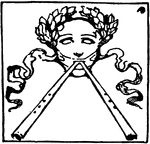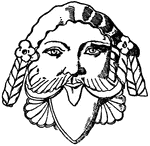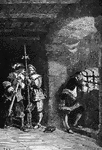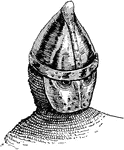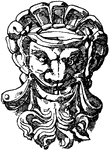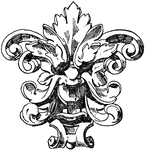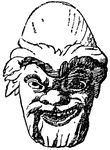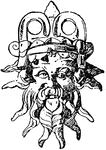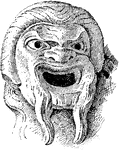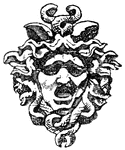Clipart tagged: ‘mask’

State Bed
This state bed is designed in an Elizabethan style. The frame is made out of carved walnut wood. The…
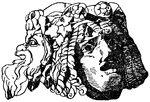
Mask Decoration
The mask decoration was founded in Pompeii, Rome. These masks were used as keystone decorations of doors…

SideMask Decoration
The mask decoration was found in Pompeii, Rome. These masks were used as keystone decorations of doors…
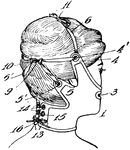
Elastic Facemask
sports.the protective equipment, usually made of steel or plastic, that guards the face, as the steel…

Car Fender
Fender is the US English term for the part of an automobile, motorcycle or other vehicle body that frames…
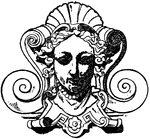
Akroter Grotesque Mask
Akroter Grotesque mask. This mask is usually found on keystones, consoles, spouts, handles, shields,…

Carved Bench Grotesque Mask
The Carved Bench Grotesque Mask is a mask design carved on a bench in Bargello, Florence, Italy.
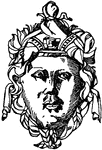
Female Grotesque Mask
The Female Grotesque mask was designed on a metal shield during the German Renaissance.

Female Grotesque Mask
The Female Grotesque mask was designed on a metal shield during the German Renaissance.
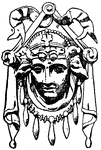
Late French Grotesque
The Late French Grotesque Mask, found in the Theater de Bellecour in Lyons, France. The design was used…
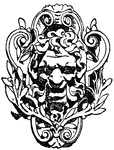
Evil Modern French Grotesque
This Modern French Grotesque mask is found at the Ministry of War in Paris, France. This design used…
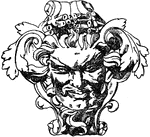
Modern French Grotesque
The Modern French Grotesque Mask were used on keystones, consoles, spouts, handles, shields, capitals,…
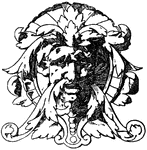
Modern French Grotesque Mask
The Modern French Grotesque Masks were used on keystones, consoles, spouts, handles, shields, capitals,…

Pilaster Grotesque Mask
The Pilaster Grotesque mask comes from a part of a capital pilaster of the tomb of Louis XII in St.…
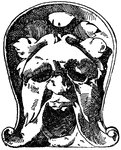
Single Grotesque Mask
The Single Grotesque mask comes from a frieze design during the Italian Renaissance. It was designed…

Mascaron
In architecture, a mascaron ornament is a face, usually human, sometimes frightening or chimeric whose…

Bacchus Mask
The Bacchus Mask (Greek God of wine) is a Graeco Italic style. It is a fragment of a vessel or utensil.

Grotesque Mask
The Grotesque mask is a Venetian Italian Renaissance design. It was often place on keystones, consoles,…

Grotesque Horn Mask
The Grotesque mask is a design used on keystones, consoles, spouts, handles, shields, capitals, panels,…
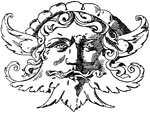
Grotesque Mask
This Grotesque mask was designed during the Italian Renaissance, by Sansovino. It is found on the tomb…
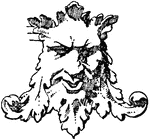
Mad Grotesque Mask
This Mad Grotesque Mask is part of a modern panel designed by sculptor Hauptmann.

Melting Grotesque Mask
This Melting Grotesque Mask has an escutcheon design of a lock during the German Renaissance.

Pulled Grotesque Mask
This Pulled Grotesque Mask is on a pedestal of a column on a tomb in Pforzheim, Germany during the German…

Rounded Grotesque Mask
This Grotesque Mask was designed by Michelangelo during the Italian Renaissance.
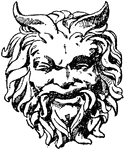
Satyr Mask
The Satyr Mask (Greek Mythological character) was designed during the Italian Renaissance by Sansovino,…

Winged Grotesque Mask
This Winged Grotesque mask design comes from the spout of a can during the German Renaissance.
Comedy masks
"While Greek tragedt grew farther and farther away from the humor and burlesque so characteristic of…
Tragedy masks
"Tragedy masks. The origin of Greek drama is to be found in the yearly celebrations in honor of Dionysus,…
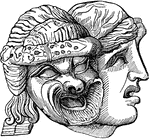
Persona
"A mask. Masks were worn by Greek and Roman actors in nearly all dramatic representations. This custom…

Persona
"A mask. Masks were worn by Greek and Roman actors in nearly all dramatic representations. This custom…
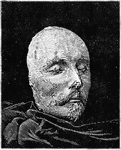
Shakespeare Death Mask
In Western cultures a death mask is a wax or plaster cast made of a person's face following death. Death…
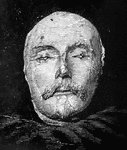
Shakespeare Death Mask (Frontal View)
In Western cultures a death mask is a wax or plaster cast made of a person's face following death. Death…
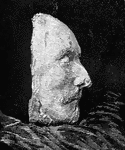
Shakespeare Death Mask (Right Side)
In Western cultures a death mask is a wax or plaster cast made of a person's face following death. Death…
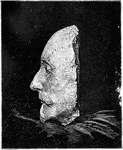
Shakespeare Death Mask (Left Side)
In Western cultures a death mask is a wax or plaster cast made of a person's face following death. Death…
Mask Terminus
The mask terminus is a modern design that is found on a chimney. It is ornamented with festoons and…
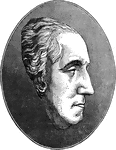
Houdon's Mask of Washington
Houdon's portrait sculpture of Washington was the result of a specific invitation by Benjamin Franklin…
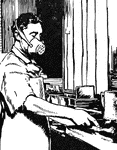
Worker with Mouthpiece
"A workman wearing a mouthpiece to protect himself from dust." — Ritchie, 1918
